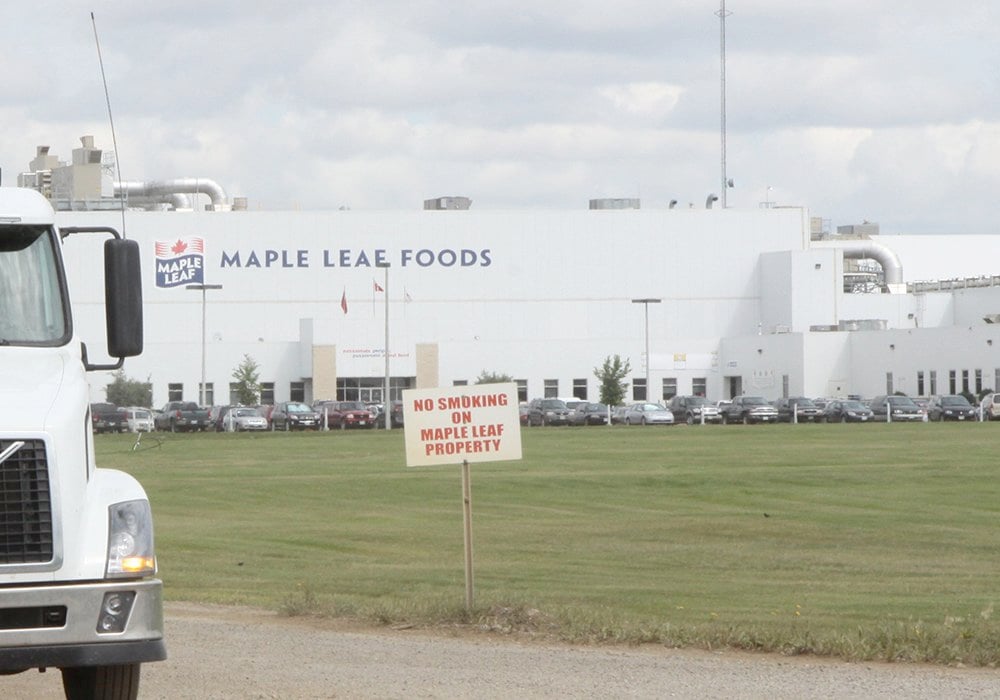There are 10 federally inspected hog slaughter plants in Western Canada.
Using data from the Agriculture Canada website, they are:
- Maple Leaf Foods, Lethbridge
- Lacombe Meat Research Centre, Lacombe, Alta.
- Olymel, Red Deer
- Donald’s Fine Foods, Langley, B.C.
- Sunterra Meats, Trochu, Alta.
- Maple Leaf Foods, Brandon
- Hylife Foods, Neepawa, Man.
- Winkler Meats, Winkler, Man.
- Thunder Creek Pork, Moose Jaw
- Country Meat and Sausage, Blumenort, Man.
Read Also

Why feds imposed EV tariffs
Moe and Kinew have a fight on their hands when it comes to eliminating the EV tariff. Canada has to worry about pissing off the U.S. and Mexico and hundreds of thousands of auto workers.
Of those plants, Maple Leaf in Brandon is the largest.
The 720,000 sq. ft plant has a capacity of 90,000 hogs per week, the Maple Leaf website says.
However, the company isn’t using the Brandon plant to its full potential. It is likely slaughtering 67,000 to 73,000 hogs per week, on average, or 75 to 81 percent of the processing capacity.
That’s not the norm in the slaughter industry, where most plants operate at 95 percent capacity or higher.
“I would say it (75 percent capacity) is quite unusual,” said John Nalivka, owner of Sterling Marketing Inc., a consultancy in Oregon that specializes in the livestock and red meat industry.
In a 2020 article for porkbusiness.com, Nalivka estimated that between 2015 and 2019, pork slaughter plants in the United States operated at an average capacity of 97.7 percent.
If a plant owner doesn’t have any problems with labour and the hogs are available, the slaughter plant should be running in the 90s, he said.
Maple Leaf owns and operates hog barns in Manitoba, which supply a portion of the pigs to the Brandon plant. It also contracts production with independent producers, including Hutterite colonies.
Calculating the number of hogs slaughtered in Brandon per week or per year is a bit of guessing game. In 2019, for instance, 5.7 million hogs were slaughtered in Manitoba and Saskatchewan, based on Agriculture Canada data:
- Of that 5.7 million, an estimated 1.8 to two million were processed at the Hylife plant in Neepawa.
- Approximately 250,000 to 300,000 were processed at Thunder Creek in Moose Jaw.
- That means about 3.5 million were slaughtered in Brandon, or about 67,000 per week.
In 2020, pig slaughter in Saskatchewan and Manitoba jumped to 6.1 million, according to Agriculture Canada data for federally inspected plants. That likely means that Maple Leaf slaughtered more than 3.5 million pigs at its Brandon plant in 2020, but it’s hard to determine an exact figure.
Even if Maple Leaf processed 3.75 million pigs in 2020, that’s still about 900,000 less than the full capacity of the Brandon plant.
The Brandon slaughter plant has been running well below capacity for years, partly because of strict regulations on hog barn construction in Manitoba. Few barns were built between 2006 and 2016, as environmental rules discouraged investment in hog barns.
“The number of market hogs could be increased as we have the sow base and the processing capacity to take the pigs,” former Manitoba Pork chair Karl Kynoch said in 2014.
“But we need some help to lever more private capital investment on-farm and for government to stop forcing regulations, which discourage investment and do nothing for the environment.”
The lack of investment may also be related to pig prices on the Prairies.
Using an average cost of production of $185 per market hog, prices have frequently been below that benchmark during the last five years.
A few producers and companies have built new barns in Manitoba, but the number of hogs on farm has remained steady in the province.Since 2016, the number has been stuck at 3.3 to 3.4 million, including sows.

















